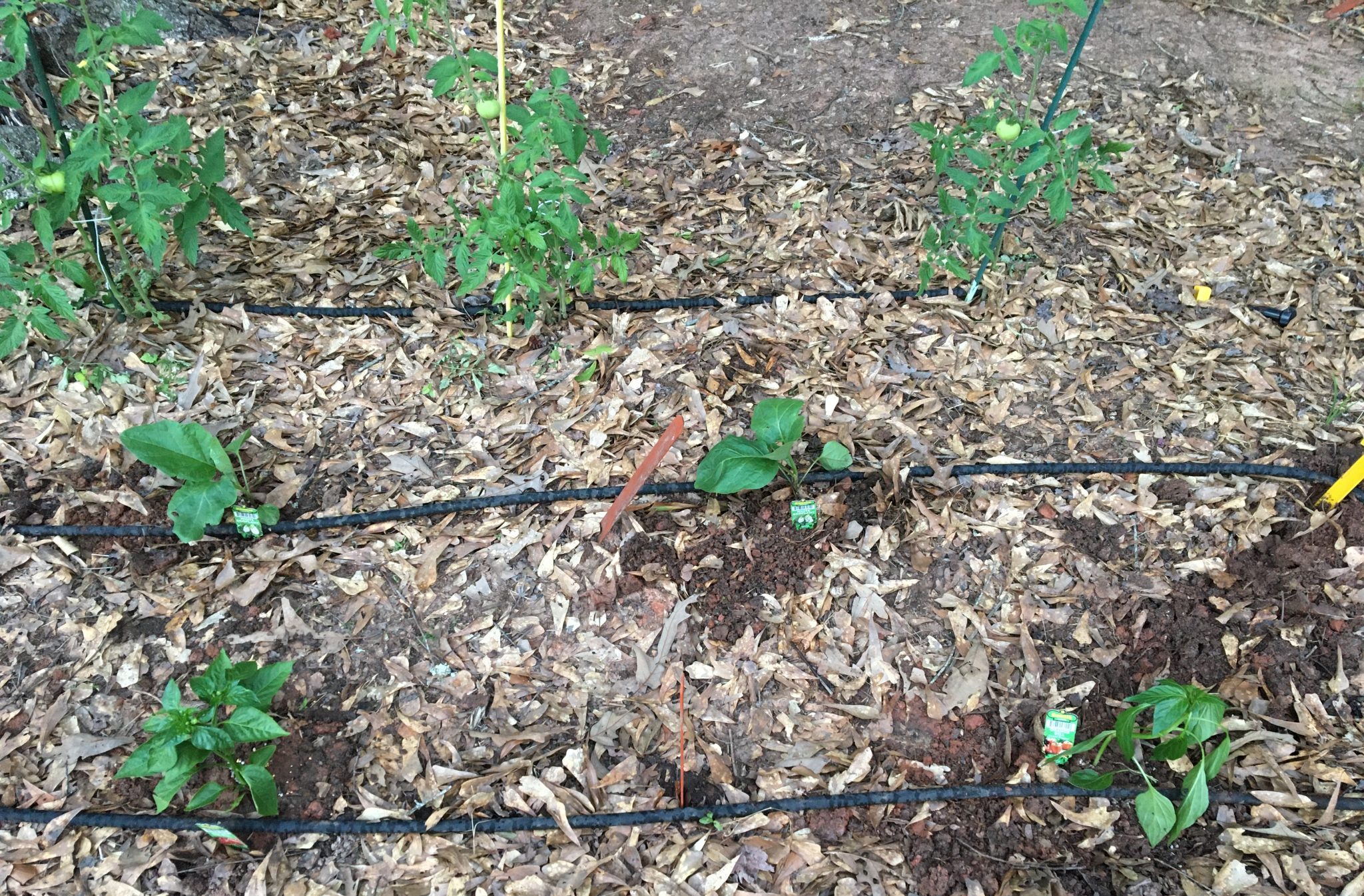Farming

Adequate, timely irrigation is one of the first requirements of a sustainable integrated pest management (IPM) system as it is critical to overall plant health.
Water management is one of the most critical issues in modern agriculture. Adequate, timely irrigation is one of the first requirements of a sustainable integrated pest management (IPM) system since it is linked to overall plant health. Mismanaged watering can sicken plants, making them more vulnerable to insect pests.
Water can be managed in simple and smart ways. Basic irrigation videos on the Farming Basics phone app and Alabama Extension Commercial Horticulture page on Facebook can be helpful for beginners wanting to know about irrigation equipment. A few tips for water management in vegetable production from the IPM perspective are as follows:
- Always direct water close to plant roots. Flood irrigation leads to the loss of top soil and nutrients and chokes the plant roots; therefore, water close to the roots. Most vegetable growers use a drip irrigation system that trickles water to the plant root zone. Sprinklers can be used for small vegetable plants, but the risk of foliar diseases increases greatly along with uneven water application in the late growth stages. Although a soaker hose is not the best option for vegetable production, it is inexpensive and readily available at a store.
- Keep the vegetable leaves dry to reduce pathogens and insects. Overhead or sprinkler irrigation wets the foliage, which makes conditions more favorable for disease development. Splashing water off the plants may also cause pathogens to splash between closely planted plants. Although overhead irrigation is good for dislodging aphids from leaves and drowning spider mites, it loses water to evaporation and increases the risk of disease, Low- pressure soaker hose and drip irrigation systems under the plants reduces loss of insecticides applied to the plant foliage. Organic producers who may use bioinsecticides for pest management can benefit from these methods. Vegetable fields with a drip irrigation system also make it possible to inject systemic chemical insecticides through the drip line, reducing the need for overhead applications.
- Use mulch. Use mulch on the top soil to hide the irrigation system and to reduce evaporation. Mulch helps retain moisture and reduce weed seed germination and soil erosion. In a garden, mulch can also absorb excess pesticides and prevent them from washing off or leaching. A variety of natural mulches are available; however, it is wise to determine which are suitable for your farm or garden. Pay attention to the thickness of the mulch as excessive watering under a thick mulch can be detrimental to the plants and harbor insect pests such as cutworms and armyworms.
- Use a chemigation system. Using chemigation to direct water and insecticide with drip irrigation or a contained system can drastically reduce labor costs as well as the amount of insecticide needed. Record your garden or farm activities in order to document the effectiveness of your irrigation system. When in doubt, call your nearest Extension office for help with designing suitable irrigation and pest management systems so you can enjoy a plentiful harvest.
Using the Home and Urban Garden IPM Slide Chart
The new Urban Farm IPM Toolkit is available for urban farmers and community gardeners. It is a wheel slide chart that has both conventional and organic insecticide listings for nearly 20 different crops. This publication also lists common insect pests and shows images that may help when scouting garden vegetables. E-mail bugdoctor@auburn.edu to get your own copy. Visit the Alabama Extension IPM website for videos and other publications.
For more information on irrigation and IPM, refer to the following:
- High Residue Farming under Irrigation: Pest Management Considerations (Washington State University Extension)
- Drip Chemigation of Insecticides as a Pest Management Tool in Vegetable Production (Journal of IPM, 2012)
- Alabama Cooperative Extension System High Tunnel Crop Production Handbook Apple Book Preview


